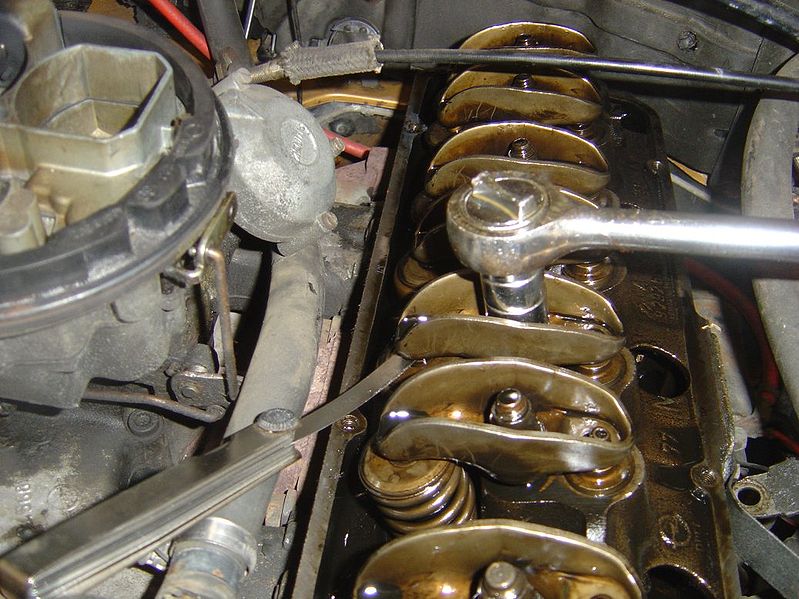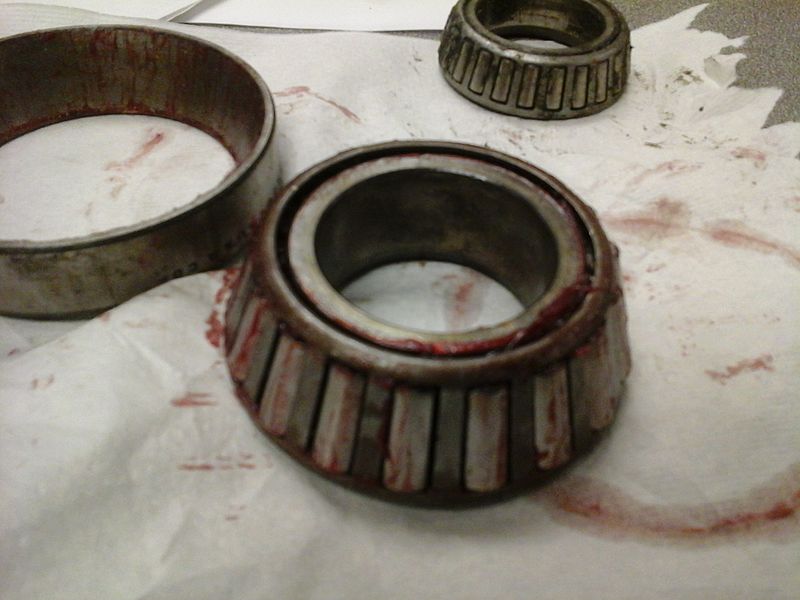It is probably safe to say that most of us spend a good deal of our time looking after and caring for our cars. We do the typical maintenance checks, such as maintaining our tire pressure, changing our oil with a quality filter, keeping our paint tip-top with frequent cleanings and good quality coatings. We even go the extra mile and do some things that get strange looks from others at times (I have a friend who regularly details his engine bay.)
Unfortunately, however, there are a few items of maintenance that might be overlooked, or are easier to forget than confront, but which are extremely important to the care and longevity of our cars. Not all cars require each of the services mentioned below, but it would be good to investigate whether or not your car does. If it does, you are likely to find a wealth of information on good practices and procedures for your individual vehicle. That, after all, is the beauty of the internet!
Valve Lash Adjustments
 Most newer cars don't require this service because they have self adjusting valve lifters (often hydraulic). However, some modern cars, as well as a large percentage of older cars do have adjustable valves that need to be checked periodically. The procedure will vary from engine to engine, but the general idea is the same: remove the valve cover, and check the clearance between the top of the valve stem and the cam or rocker that actuates it. You can then adjust the lash either by turning a screw that changes the clearance, or by replacing clearance shims, as is the case with some Volvos and Volkswagens. Adjusting valve lash is critical to the longevity of your valves, as a valve without sufficient clearance could burn up at the face by not closing properly against the valve seat. A valve with too much clearance can damage the valve stem, or the rocker that actuates it by allowing too much room to “bang around”- often too much clearance can be heard as a distinct clatter when the engine is cold. Sufficient clearance is necessary because as the valves get hot, the valve stems expand. The clearance allows the valve stem to expand without popping the valve open.
Most newer cars don't require this service because they have self adjusting valve lifters (often hydraulic). However, some modern cars, as well as a large percentage of older cars do have adjustable valves that need to be checked periodically. The procedure will vary from engine to engine, but the general idea is the same: remove the valve cover, and check the clearance between the top of the valve stem and the cam or rocker that actuates it. You can then adjust the lash either by turning a screw that changes the clearance, or by replacing clearance shims, as is the case with some Volvos and Volkswagens. Adjusting valve lash is critical to the longevity of your valves, as a valve without sufficient clearance could burn up at the face by not closing properly against the valve seat. A valve with too much clearance can damage the valve stem, or the rocker that actuates it by allowing too much room to “bang around”- often too much clearance can be heard as a distinct clatter when the engine is cold. Sufficient clearance is necessary because as the valves get hot, the valve stems expand. The clearance allows the valve stem to expand without popping the valve open.
Differential Fluid Replacement
Most rear wheel drive cars will have a differential which is not sealed, and which requires periodic replacement of it's gear oil. As with your engine, it is very important to use the manufacturer specified gear oil, as improper oils may not lubricate with the same effect. Differential gears, especially hypoid and limited slip differentials, are a difficult environment for lubricating oil. Despite that, this is one of the most overlooked maintenance items in a car. Four wheel drive vehicles will generally have a differential front and rear, while all wheel drive cars may have a third differential in the center. Front wheel drive vehicles, as well as some all wheel drive vehicles, integrate a differential with the transmission, so it is important to see if your differential uses lubricating oil different from that of the transmission. This information should all be available in the owners manual of your vehicle. You will typically have to get underneath to perform this service, but inspecting differential oil for metal shavings and debris can be an excellent way to inspect the health of your differential gears.
Wheel Bearings
 Many vehicles nowadays have sealed wheel bearings which are generally considered maintenance-free. However, plenty of vehicles still utilize open, greased bearings which require periodic repacking. Repacking is a pretty simple idea- simply place a wad of bearing grease in your hand and run the bearing into the grease so as to force grease between all of the rollers. The difficulty in this job is usually in removing the bearings in the first place, but it is an important job, and one that should be handled at least as often as the brakes are replaced, in my opinion. The wheel bearings take a hard beating throughout their life, and if one finally locks up, it can take an entire wheel hub and spindle with it. These hard-parts are generally not meant to be replaced and can be very expensive- it will always be more economical to have the bearings repacked or replaced than it will be to replace major front end components.
Many vehicles nowadays have sealed wheel bearings which are generally considered maintenance-free. However, plenty of vehicles still utilize open, greased bearings which require periodic repacking. Repacking is a pretty simple idea- simply place a wad of bearing grease in your hand and run the bearing into the grease so as to force grease between all of the rollers. The difficulty in this job is usually in removing the bearings in the first place, but it is an important job, and one that should be handled at least as often as the brakes are replaced, in my opinion. The wheel bearings take a hard beating throughout their life, and if one finally locks up, it can take an entire wheel hub and spindle with it. These hard-parts are generally not meant to be replaced and can be very expensive- it will always be more economical to have the bearings repacked or replaced than it will be to replace major front end components.
This is by no means an exhaustive list, and there are plenty of other services that should be carried out periodically as well, including inspection of exhaust piping and hangers, clearing of mud and debris from the underbody, drive axle and CV/U joint inspection, as well as greasing all necessary joints in the vehicle. Your owners manual will often give you a good clue as to the factory recommended service items on your vehicle. Otherwise, a call to the dealer can often yield great information. However you choose to do it, these additional maintenance items will only bring you peace of mind, and a deeper appreciation for your automobile.











